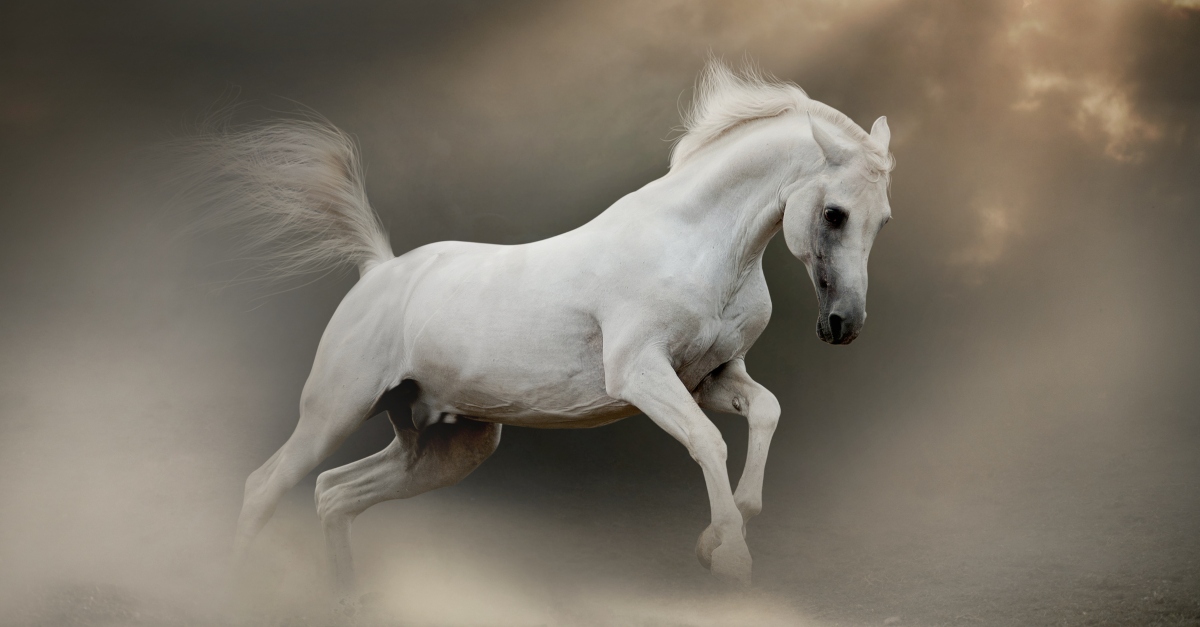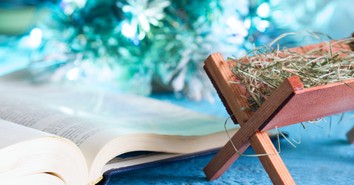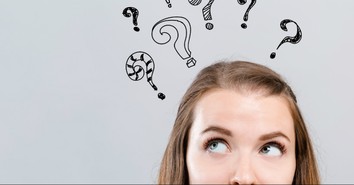Who is the White Horse in Revelation?

The Book of Revelation is filled with vivid and symbolic imagery, none more compelling than the vision of the white horse. Described in Revelation 19:11-16, this white horse is ridden by Jesus, being called Faithful and True, who judges and wages war with justice. This imagery contrasts starkly with the rider of another white horse mentioned in Revelation 6, an impostor attempting to mimic Christ.
What’s the difference between the white horse of conquest and Jesus on the white horse?
We’ll dive into this questions and more as we explore the symbolism of horses in Revelation, what the white horse ultimately means, and why Christians should know about it.

The White Horse in Revelation throughout the Bible
We actually find the white horse in two places in Revelation, and the verses talk about two different horses. We’ll put both verses below.
Revelation 6:2 “I looked, and there before me was a white horse! Its rider held a bow, and he was given a crown, and he rode out as a conqueror bent on conquest.
John sees this horse, one of the four famous horses of the apocalypse, toward the beginning of Revelation.
Revelation 19:11 “I saw heaven standing open and there before me was a white horse, whose rider is called Faithful and True. With justice he judges and wages war.”
Here John observes another white horse with its rider, Jesus, who goes by the name “Faithful and True” in this passage.
Now before we dive into the differences between these two passages, we should analyze the rest of the Bible so see if we find any other instances of horses, particularly white horses, being mentioned.
Although we don’t see any other explicit mention of horses in the Bible, we should note that most instances of horses listed show them in battle. We’ll include a few of those verses below.
1 Kings 4:26 “Solomon had four thousand stalls for chariot horses, and twelve thousand horses.”
2 Samuel 8:4 “David captured a thousand of his chariots, seven thousand charioteers and twenty thousand foot soldiers. He hamstrung all but a hundred of the chariot horses.”
We’ll discuss the symbolism of horses in a later section.
What is the Difference Between the White Horses in Revelation?
From the two Revelation passages above, we can clearly see two different riders and horses used, both bearing a coat of white. Let’s explore the differences between the horse of the apocalypse and Jesus’ horse.
The White Horse of the Apocalypse
The horse of the apocalypse actually appears to Zechariah in a vision (Zechariah 1:8). And although Jesus and the rider of this particular horse share many similarities, the rider of this horse, who wears a crown, most likely represents a pseudo-christ of some sort. A political leader bent on conquest, such as an Alexander the Great or fill-in-the-blank political leader we can place on the back of this horse.
As suggested in the commentary, perhaps this represents an antichrist of some sort, if not the Antichrist himself. Depending on where you stand in the millennialism spectrum, you may have already believed this rider to have carried out his mission on the earth (or you may believe he has not yet shown his face).
No matter what the case, this rider is by no means Jesus. He operates under the guise of peace with a bow of no arrows (Daniel 9:27), but in the end, he intends to conquer humanity.
This rider represents how God does not desire humanity to be fooled, and He can use even deceivers to bring judgment. Similar to how he used nations like Babylon to usher in judgment for rebellion, he will do the same with this rider for a time.
Jesus on the White Horse
Now let’s contrast that rider with Jesus found in Revelation 19:11-16.
White tends to symbolize righteousness (more on this in a moment) and so no doubt its rider, Jesus, represents this attribute. Similar to the previous horse, he is a tool of judgment in the end times. But unlike the previous white-horse rider, he does not deceive or pretend to make peace.
Also, unlike the first rider, he does not wear one crown, he wears many. This shows his ultimate authority and kingship, over all the false rulers and conquerors who try to make themselves into a god-figure.

What is the Symbolism of the White Horse in Revelation?
We’ve touched on the symbolism used in Revelation passages. But let's recap some highlights below:
Horses: Horses usually represent something to do with war. Seldom will you find a horse in Scripture that doesn’t belong in battle. In fact, this is likely why Jesus confused people when he made his triumphal entry on a donkey instead of a warhorse. He made it clear that during his first time on earth, he would not be a warlord or conqueror of the Romans (Matthew 21:1-11).
White: White tends to represent something righteous or pure in the Bible. The fact the horseman of the apocalypse rides it may show that he’s operating under a pseudo-righteousness to deceive more people.
Crowns: Crowns, as one may guess, represent authority or victory. The horseman of the apocalypse wears one crown, showing he will conquer for a time. Jesus, on the other hand, wears many crowns, the ultimate victor and authority.
Bow: Bows tend to represent strength and battle. The fact the horseman doesn’t have arrows shows he uses some deceitful tactics of peace to sway his followers for a time. We can contrast this with Jesus. Out of Jesus’ mouth comes a sword (a reference to Scripture being a double-edged sword). Jesus speaks truth and does not deceive like the first horseman.
3 Reasons Christians Should Know about the White Horse
We should know about the two white horses for a number of reasons.
First, we need to watch out for that first white horse. Although Jesus does appoint political leaders and allows for certain people to have power for a time (Romans 13:1), we cannot place our hope and trust in them alone.
Political leaders, or leaders in general, will fail us. And in the case of the white horseman, many have set forth to deceive the world.
Second, the two horses and riders share many similarities.
We should know this because Satan often likes to operate under half-truths. If he influences an antichrist, he will want that representative to be as close to the truth as possible. That way his message can sway away a great many.
Finally, we need to stay in Scripture and listen for the message of Faithful and True.
Satan is hard at work trying to deceive the world, whether we’ve reached the last days or not. If we don’t regularly immerse ourselves into Scripture, into the double-edged sword, we can find ourselves deceived by a similar-but-different message.
Revelation has two riders on white horses, but we only want to follow one. They share many similarities. But ultimately, one tries to deceive the world, and the other is faithful and true.
As we approach the events of Revelation, if we are not in the midst of them already, we need to keep careful watch. Many deceivers will try to impersonate Christ and will make bold claims of peace. For those of us who know our Savior, we will watch for him and will stay immersed in Scripture to avoid the deceptions of the evil one.
Photo Credit: ©Getty Images/mari_art
Hope Bolinger is an acquisitions editor at End Game Press, book editor for hire, and the author of almost 30 books. More than 1500 of her works have been featured in various publications. Check out her books at hopebolinger.com for clean books in most genres, great for adults and kids. Check out her editing profile at Reedsy.com to find out about hiring her for your next book project.
This article is part of our larger End Times Resource Library. Learn more about the rapture, the anti-christ, bible prophecy and the tribulation with articles that explain Biblical truths. You do not need to fear or worry about the future!
Battle of Armageddon
Tribulation
Signs of the End Times
The Four Horsemen of the Apocalypse
The Seventh Seal Opened
What Is the Death Angel?
Originally published October 01, 2020.







